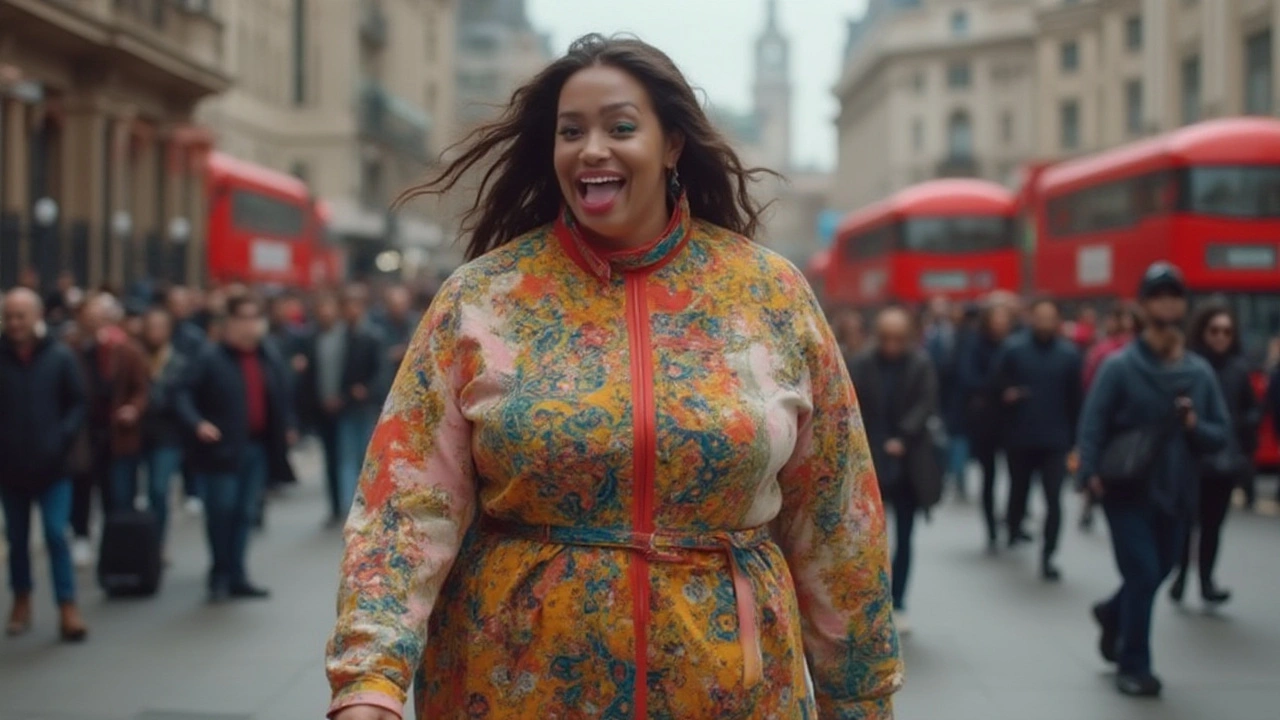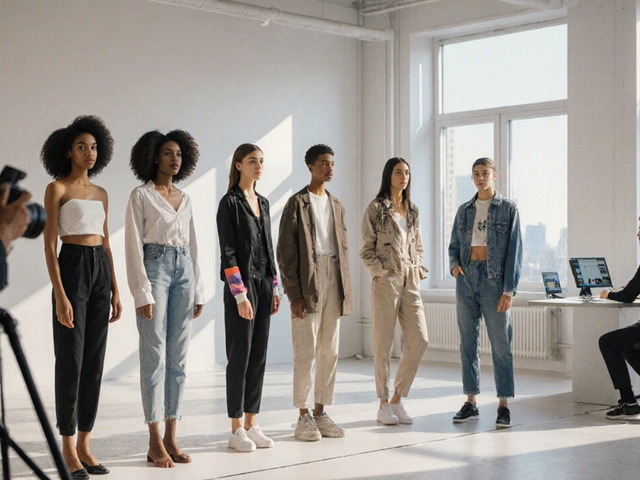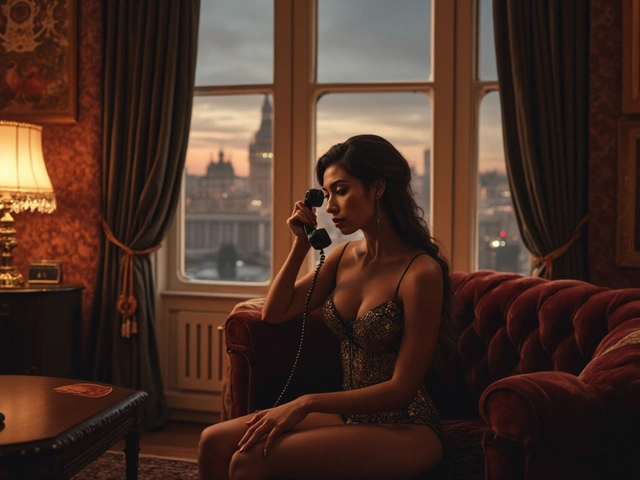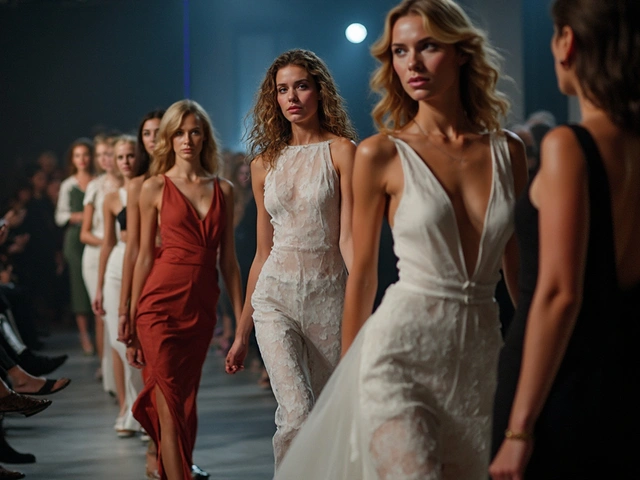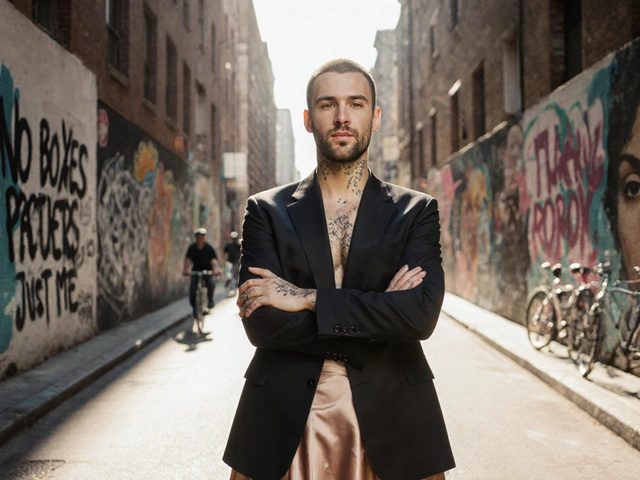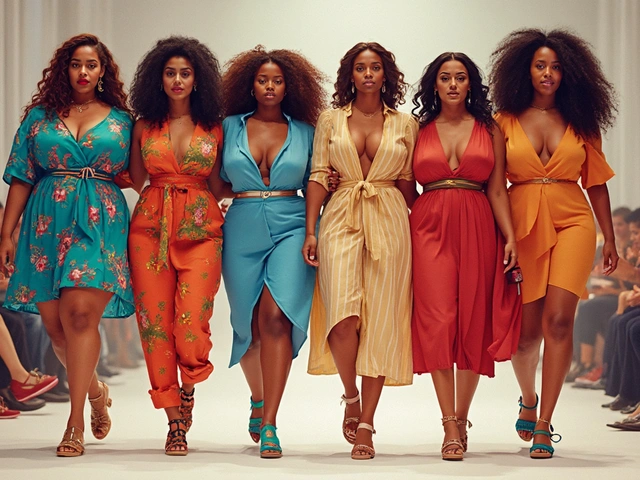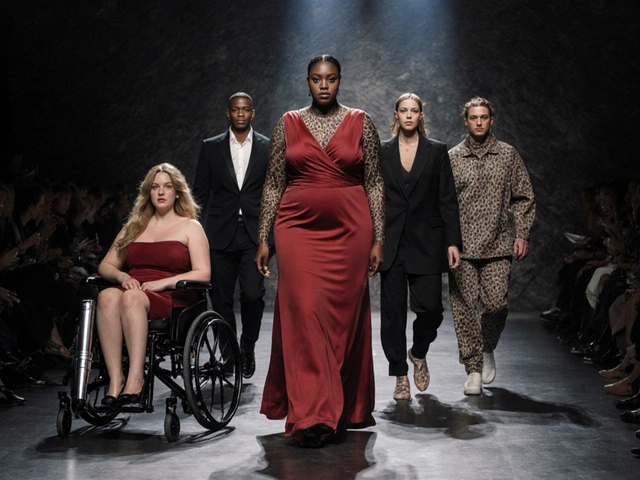It feels like the rulebook in female fashion got tossed out a window, and good riddance to it. Just ten years ago, searching for plus-size models on the runway was like looking for a unicorn in a thunderstorm. But now? The industry's not just changing—it's exploding with women of every shape, size, and color, making space for real bodies to finally stand tall in fitted pants, video campaigns, and magazine covers. Take a scroll through recent Vogue issues or Zara's spring campaign, and you'll notice this isn't some fleeting trend. It's a full-on revolution, with plus-size models leading the charge and challenging what "fashionable" really looks like.
The Road to Visibility: How Plus-Size Models Broke Barriers
There’s no way around it: the fashion world used to be brutal about body image. For decades, designers and agencies clung to tough size standards—models had to be thin, nearly all between sizes 0 and 4. Curvy women were kept off runways, rarely shown in ad campaigns, and hardly ever given a shot at magazine covers. This attitude shaped the entire industry. Even in the early 2000s, the average American woman (size 14 or 16) was nowhere to be found in fashion ads. Everything shifted in fits and starts, but two moments really got the ball rolling. The rise of body positivity activism on Instagram and trailblazing models—think Ashley Graham shattering ceilings as a Sports Illustrated cover star in 2016—brought mainstream eyes to the problem. Graham’s historic SI debut sparked intense debate. Suddenly, social feeds lit up with calls for authentic representation. By 2018, big names like Christian Siriano were booking models up to size 24. Thanks to the relentless work of activists and bold women, getting real bodies into high fashion finally became a demand customers, not just insiders, made impossible to ignore. Today, you can see curve-friendly fashion in everything from Savage X Fenty’s powerhouse shows to H&M’s size-inclusive lines. And last year, at Paris Fashion Week, nearly a fifth of runway looks were modeled by women above a size 10—a record that’s still inching up this season.
Why Representation in Fashion Matters More Than Ever
It’s not just about fitting into cute dresses anymore—it’s about how women feel about themselves when they look in the mirror. Studies from the Dove Global Beauty and Confidence Report (2023) show 70% of women feel inspired seeing someone of their body type in fashion campaigns. That stat isn’t just a pleasant surprise; it spells out the value of real representation on self-esteem. When brands finally started listening, the results were immediate. Retailers like Aerie and Universal Standard posted double-digit sales bumps after doubling down on diverse models in ads. Their social media comments read like love letters to authenticity. And the images kids grow up with? They’re finally shifting. When girls see role models who actually look like them—stretch marks, curves, and all—the odds that they’ll torture themselves with crash diets or shame plummet. The impact goes beyond the racks and runways. For instance, a 2024 report from Fashion Revolution showed that brands hiring a broader range of sizes doubled their customer loyalty scores in 18 months. Seeing yourself represented in the places that shape style is like permission—permission to take up space, be bold with your clothes, and know fashion isn’t reserved for a select few.
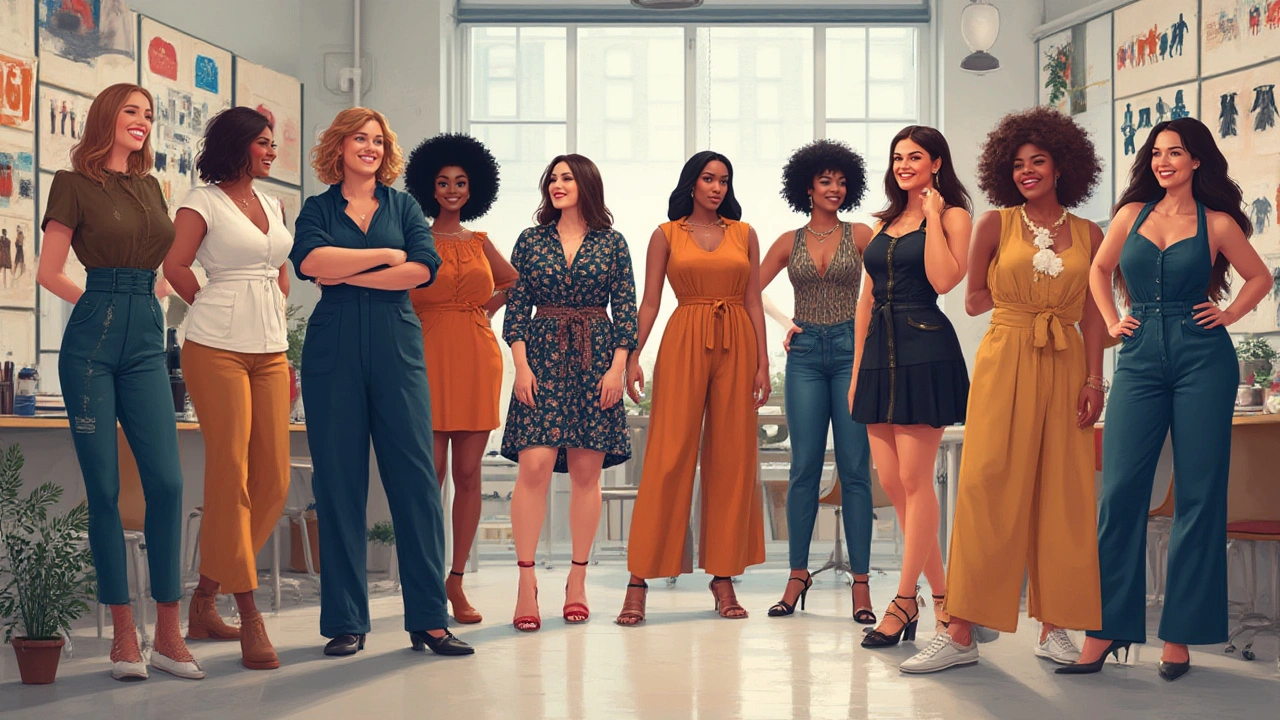
Brands, Agencies, and the Plus-Size Model Boom
Major brands are finally seeing the upside of putting curvy models front and center. Savage X Fenty, led by Rihanna, is a force of nature—her yearly runway shows feature bodies of every kind. H&M, Old Navy, and Adidas now routinely hire models up to size 24 in campaigns. Even luxury houses have started taking notes: Michael Kors, Marc Jacobs, and Versace made headlines last year when plus-size models walked in their flagship fashion weeks. Agencies that once shied away from signing curvier women now run special divisions just for them. IMG Models, Wilhelmina, and Muse NYC set up permanent plus-size boards, with Ashley Graham, Paloma Elsesser, Precious Lee, and Tess Holliday as the most in-demand names on their list. These women land billboards, fragrance deals, and magazine covers—often at the same pace as their straight-size peers. Do the numbers add up? Absolutely. Here’s a comparison from Business of Fashion (BOF) published in May 2025:
| Brand | % Plus-Size Models in Campaigns (2020) | % Plus-Size Models in Campaigns (2025) |
|---|---|---|
| Aerie | 21% | 48% |
| H&M | 8% | 29% |
| Savage X Fenty | 34% | 58% |
| Gucci | 0% | 12% |
What’s powering this boom? It isn’t just "wokeness"—it’s business. Brands discovered something simple: women spend money where they feel seen. And it’s not just selling clothes. Plus-size models are landing deals in beauty, sportswear, even high jewelry. The market for curvy plus-size fashion climbed nearly 28% worldwide since 2021, with the US alone pushing it past $35 billion in 2024, according to Statista. Who’s the rising star? Names like Tess Holliday and Paloma Elsesser rake in seven-figure contracts, demand speaking fees, and pull huge engagement online. For agencies, this means a gold rush—and a chance to rewrite what beauty means on billboards, apps, and TikTok feeds.
The Real Impact: Changing Hearts, Minds, and Closets
Fashion isn’t just about clothes—it’s about community and the feeling you belong. One real shift? People are ditching old assumptions about what "plus-size" means. There’s no such thing as one “big” body type. Some women are athletic and curvy, others have fluffy bellies and thick thighs. Seeing this breadth on magazine covers and social ads breaks the old, harmful one-size-fits-all mentality. Celebs like Lizzo, Barbie Ferreira, and Aidy Bryant poke fun at the stereotypes on talk shows and in campaigns, turning body positivity into something joyful and totally normal. Teens are the fastest-growing group buying plus-size fashion—think of how 16-year-olds today grew up with Instagram stars like Chloe Elliott wearing bold looks without apology. For adults who spent decades feeling ignored, the new image of confidence offers real relief. Therapists note that clients who engage with body positive media report less frequent appearance-based anxiety and improved mood. Plus, following curvy influencers often means getting tips on fashion, fitness, and self-care that isn’t about shrinking but about thriving. Here’s a quick reality check: a 2025 survey by Refinery29 found that 74% of its readers had tried a new brand specifically because it featured models with their body type. Representation isn’t a buzzword; it’s proof that your style, size, and spirit belong exactly as you are. Your closet should be a source of fun, not shame—and this shift is finally making that possible for millions of women everywhere.
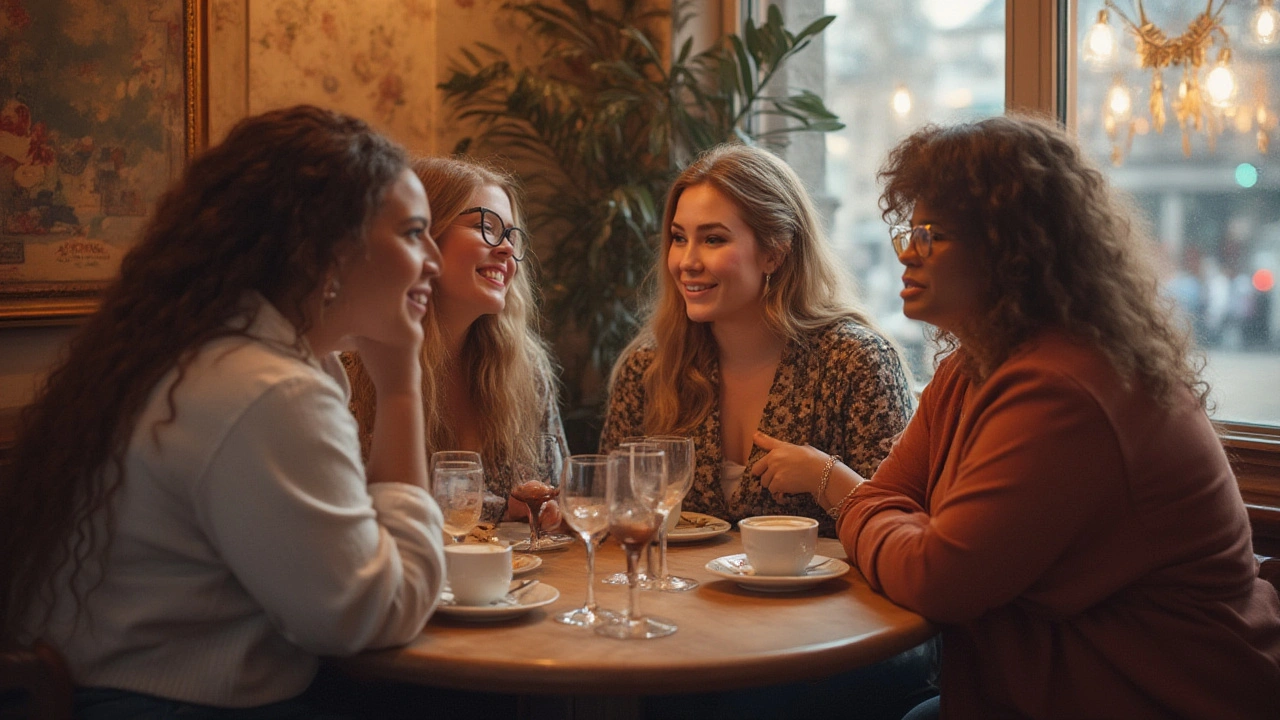
How to Celebrate and Amplify Plus-Size Diversity in Everyday Life
Ready to support the movement? Start by following plus-size models and creators who give you life—think Ashley Graham, Paloma Elsesser, or Nicolette Mason. When you shop, look for brands boasting real diversity, not just in size but age, background, and ability, too. Don’t forget to leave honest reviews: telling a store you love seeing your body type represented helps the message travel straight to decision-makers. Stuck in a rut of only seeing one kind of woman on Instagram? Hit “unfollow” on brands that stick to old-school standards and fill your feed with real, unapologetic beauty instead. Need to refresh your wardrobe? Try mixing up styles you once thought were "off-limits": crop tops, bold prints, or bright colors. The good news is, fashion’s gatekeepers can’t close the doors anymore—it’s everyday women who are breaking them down, confident curves first. Want to take advocacy further? Support local or indie designers known for their inclusive creations, attend body-positive events in your city, and share posts that honor diversity. Want some quick tips?
- Challenge outdated fashion "rules"—wear what feels good
- Tell your favorite brands when you spot genuine diversity
- Be vocal about what representation means to you (brands do listen to customers)
- Try shopping at plus-size specialty boutiques for fit tips from real experts
- Encourage young girls and friends to celebrate their looks, quirks and all
Just a few years ago, the idea of plus-size models being icons for style, confidence, and self-love felt far off. Now, their presence sparks change in closets, runways, and hearts everywhere. Embrace the movement—it’s about time everyone’s body gets its spot in the spotlight.
